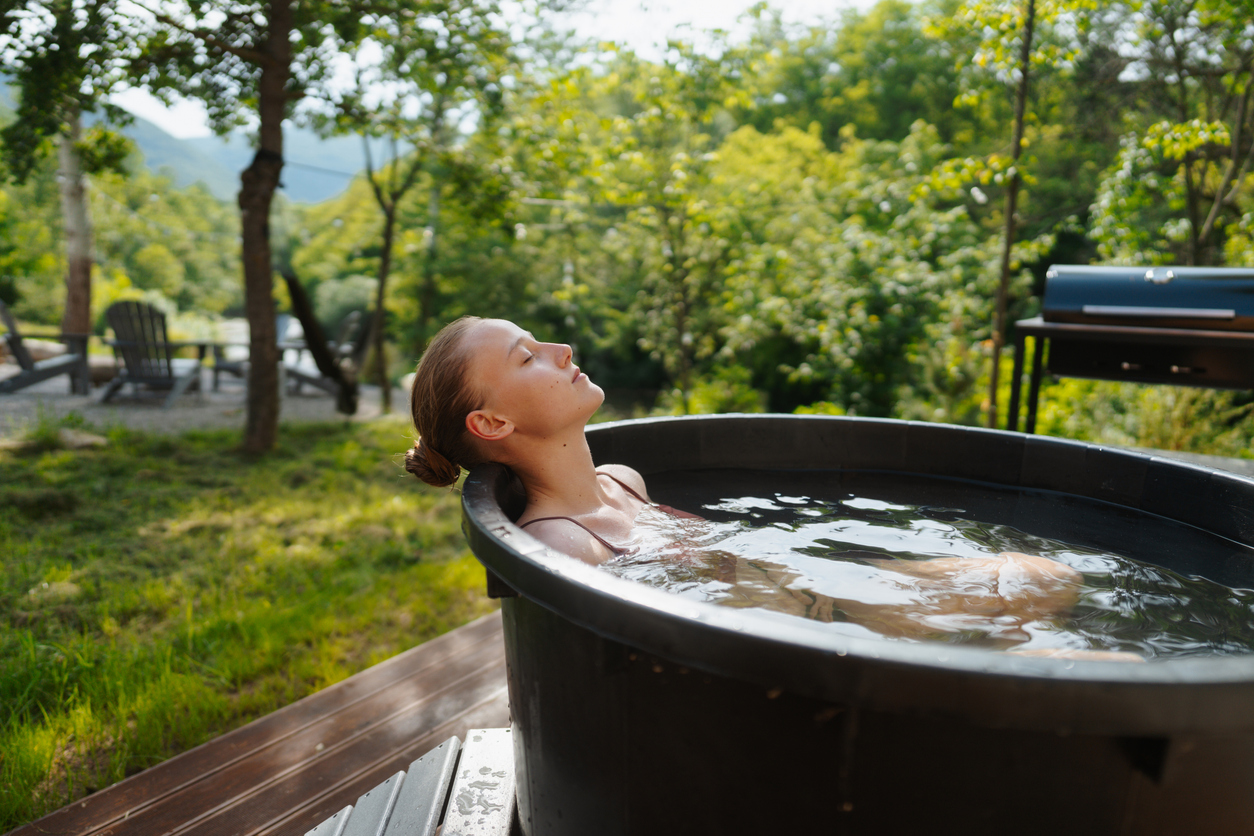Cold Plunge Therapy:
A Powerful Tool for Wellness and Recovery
Table of Contents
Written and reviewed by the clinical team at New Life Recovery in Fresno, California, including licensed therapists, medical professionals, and recovery specialists committed to helping individuals build healthier futures.
What Is Cold Plunge Therapy?
In addition to improving circulation and releasing endorphins, a study found that cold water immersion reduces muscle soreness after intense exercise by 89% for at least 24 hours.2
Beyond its physical benefits, cold plunge therapy is increasingly being used in substance use disorder (SUD) and mental health treatment. It is believed to enhance emotional resilience, reduce stress, and regulate the nervous system, which are all crucial factors in recovery and mental well-being.

Cold Plunge Therapy at New Life Recovery
At New Life Recovery, cold plunge therapy is part of our comprehensive, holistic treatment plan. By combining this holistic therapy with other modalities, individuals can benefit from compounded treatment benefits.
A Closer Look at How Cold Plunge Therapy Works
The Science Behind Cold Plunges and How They Work
Cold Plunge Therapy Reduces Inflammation and Boosts Circulation
One key benefit of cold plunge therapy is its ability to reduce inflammation. The immersion constricts blood vessels and reduces blood flow to inflamed areas, which helps limit swelling. This also makes it a good therapy option for some individuals who experience chronic pain due to inflammation.6
This is particularly beneficial for individuals recovering from substance use disorder or trauma, as this process:
- Accelerates healing
- Reduces muscle soreness
- Supports recovery from physical stress
The Impact of Cold Plunges on Neurotransmitters
- Stabilized mood
- Reduced feelings of depression or mental health symptoms
- Increased emotional resilience
Benefits of Cold Plunge Therapy for SUD Recovery
Helps Alleviate Withdrawal Symptoms During Early Recovery
- Sweating
- Nausea
- Anxiety
- Irritability
- Seizures
Supports Stress Management and Emotional Regulation
Encourages Mindfulness and Focus
- Improve the ability to manage cravings
- Reduce impulsivity
- Stay focused on recovery goals
Improves Sleep Quality and Energy Levels
- Promotes higher energy levels
- Promotes mental clarity
- Provides natural sleep enhancement
Therapies That Can Complement Cold Plunge Therapy
Synergizing With Holistic Therapies
Mindfulness
Yoga
Counseling
Using Evidence-Based Therapies Alongside Cold Plunges
Cognitive-Behavioral Therapy (CBT)
Dialectical Behavior Therapy (DBT)
DBT focuses on building skills in mindfulness, distress tolerance, and interpersonal effectiveness. These skills are essential for navigating the challenges of recovery and maintaining long-term sobriety.
Trauma-Informed Therapies
Trauma-informed therapies create a safe and supportive environment for individuals to process past experiences and develop healthier coping mechanisms. Cold plunge therapy can be integrated into trauma-informed care by providing a physical experience of release and regulation.
Eye Movement Desensitization and Reprocessing (EMDR)
Encouraging a Mind-Body Connection
Practical Considerations for Cold Plunge Therapy
Safety Protocols and Medical Supervision During Sessions
Tailoring the Therapy to Individual Tolerance Levels

Ready to Love Your Love?
Our team at New Life Recovery can integrate cold plunge therapy into personalized treatment plans for SUD and mental health recovery.
Whole-Person Healing in Fresno, CA
Multidisciplinary Team Dedicated to Your Success
- Improved physical recovery
- Emotional stability
- Mental clarity
- Building resilience
- Support in the healing experience overall
Take the First Step Toward Lasting Recovery
Curious about how cold plunge therapy at New Life Recovery can help you or a loved one on their path of healing and learning to love life again? Reach out to one of our experts today to take that first step.
You can experience all levels of care on one campus, ensuring that you get the care and personalization you deserve every step of the way. Start the process of loving your life today by reaching out to our team.
Resources
- https://www.mdpi.com/2079-7737/12/2/211
- https://pmc.ncbi.nlm.nih.gov/articles/PMC9213381/
- https://www.webmd.com/a-to-z-guides/cold-plunge
- https://pmc.ncbi.nlm.nih.gov/articles/PMC9012715/#:~:text=The%20beneficial%20effects%20of%20cold,and%20respiration%20amongst%20other%20parameters.
- https://longevity.stanford.edu/lifestyle/2024/05/22/jumping-into-the-ice-bath-trend-mental-health-benefits-of-cold-water-immersion/#:~:text=Full%2Dbody%20immersion%20exposes%20a,that%20drive%20the%20stress%20response.
- https://www.healthline.com/health/are-cold-plunges-good-for-you#possible-benefits
- https://www.psychiatryonline.org/doi/10.1176/appi.neuropsych.20240053#:~:text=Cold%2Dwater%20immersion%20triggers%20the,in%20depression%2C%20anxiety%2C%20and%20posttraumatic





